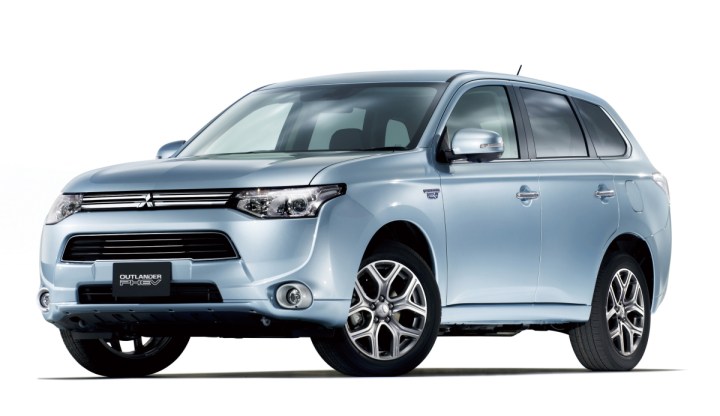
Mitsubishi hasn’t been doing much recently. So launching its first production plug-in hybrid crossover, the Mitsubishi Outlander PHEV, could be quite a coup.
However, due to global demand and a limited supply of battery packs, the Outlander Plug-In Hybrid will be delayed until at least next year, Mitsubishi Motors North America senior manager of product strategy Bryan Arnett told Green Car Reports.
If it makes the trip stateside, the Outlander Plug-In could arrive in fall 2014 as a 2015 model.
Demand in Japan and Europe is keeping Mitsubishi from exporting the crossover, Arnett said, because the company’s battery supplier can only make a limited number of cells and packs.
The Outlander Plug-In debuted at the 2012 Paris Motor Show, but things haven’t gone completely smooth since then.
Overheating battery packs forced Mitsubishi to stop production earlier this year. The problem was eventually fixed, but a second recall in June further stymied momentum.
If it ever does make it to the U.S. (hopefully not on fire), the Outlander Plug-In would essentially be in a class of one. It’s size and high driving position would put it a step above other utilitarian plug-in hybrids, like the Ford C-Max Energi and Toyota Prius Plug-In. That is, unless BMW can beat it to the market with a production X5 PHEV.
The powertrain consists of a 2.0-liter gasoline engine, 12-kilowatt-hour lithium-ion battery pack, and two 60-kilowatt electric motors – one for each axle.
The Outlander also has the novel ability to operate as a parallel hybrid (like the Prius and most other hybrids), series hybrid (where the engine is only used to generate electricity), or an all-electric vehicle.
So the Outlander could bring more than one kind of versatility to the plug-in hybrid segment, if Mitsubishi can get it over here and keep it from having a melt-down.
Editors' Recommendations
- 4 ways the best-selling plug-in hybrid in the U.S. just got better for 2024
- Jeep’s plug-in hybrid Wrangler will silently prowl the great outdoors
- Lincoln Corsair Grand Touring adds plug-in hybrid power
- Mercedes-AMG GT 73 plug-in hybrid will unleash 805 hp, report says


